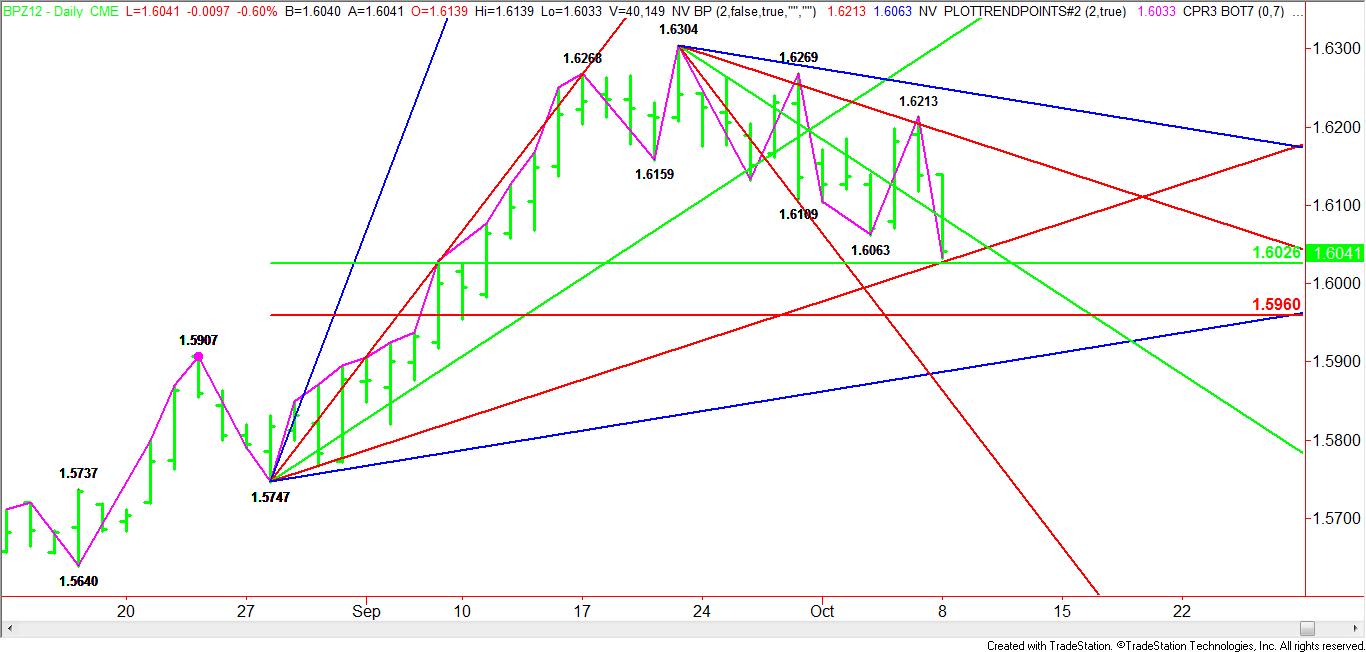Early in yesterday’s trading session, the December British pound broke through the last swing bottom at 1.6063. The series of lower-tops and lower-bottoms clearly signify that the sterling is in a downtrend.
Based on the rally from the August 28 bottom at 1.5747 to the September 21 top at 1.6304, a new retracement zone has been created at 1.6026 to 1.5960.

Overnight, the futures contract broke to the weakside of a downtrending Gann angle at 1.6084. This is today’s resistance. The next support is an uptrending Gann angle from the 1.5747 bottom. This angle is at 1.6027.
The intersection of the uptrending Gann angle and the horizontal 50% level has formed a potential downside target and support cluster at 1.6027 to 1.6026. Traders should watch for a technical bounce following the first test of this area. A trade through it could run sell stops into the Fibonacci level at 1.5960.
Fundamentally, expectations of a weaker economy continue to pressure the sterling. U.K. industrial production is expected to show a drop of 0.5 percent in August. The National Institute of Economic and Social Research will also announce its estimate for third-quarter gross domestic product after the production numbers are released.
Although there are economic factors to consider, the biggest influences on the British pound will continue to be the lingering sovereign debt crisis in Europe and the global economic slowdown. Risk-off scenarios should continue to pressure the British Pound against the U.S. dollar and the Japanese yen.
Based on the rally from the August 28 bottom at 1.5747 to the September 21 top at 1.6304, a new retracement zone has been created at 1.6026 to 1.5960.

Overnight, the futures contract broke to the weakside of a downtrending Gann angle at 1.6084. This is today’s resistance. The next support is an uptrending Gann angle from the 1.5747 bottom. This angle is at 1.6027.
The intersection of the uptrending Gann angle and the horizontal 50% level has formed a potential downside target and support cluster at 1.6027 to 1.6026. Traders should watch for a technical bounce following the first test of this area. A trade through it could run sell stops into the Fibonacci level at 1.5960.
Fundamentally, expectations of a weaker economy continue to pressure the sterling. U.K. industrial production is expected to show a drop of 0.5 percent in August. The National Institute of Economic and Social Research will also announce its estimate for third-quarter gross domestic product after the production numbers are released.
Although there are economic factors to consider, the biggest influences on the British pound will continue to be the lingering sovereign debt crisis in Europe and the global economic slowdown. Risk-off scenarios should continue to pressure the British Pound against the U.S. dollar and the Japanese yen.
